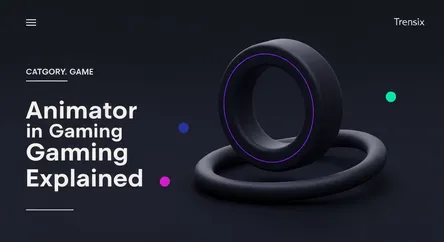Game
Animator in Gaming Explained

Discover the role of an animator in video games. Learn how these digital artists bring characters and worlds to life through movement and expression.
What is it?
An animator in the game industry is a digital artist responsible for creating motion and visual effects for characters, environments, and objects within a video game. Using specialized software like Maya or Blender, they craft everything from a character's walk cycle and facial expressions to explosive in-game events. They work closely with art directors, designers, and programmers to ensure their animations fit the game's aesthetic and function correctly within the game engine. Animators are the storytellers who use movement to convey personality, emotion, and weight, making the virtual world feel dynamic and alive.
Why is it trending?
The demand for skilled animators is surging as player expectations for visual fidelity and realism in games reach new heights. Advances in technology and more powerful hardware allow for increasingly complex and nuanced animations, pushing studios to hire top talent. The growth of the indie game scene and the expansion into new frontiers like virtual and augmented reality (VR/AR) have also created more opportunities. High-quality animation is a key differentiator in a crowded market, crucial for creating immersive experiences and memorable characters that resonate with players.
How does it affect people?
For gamers, animators directly shape the player experience. Fluid, believable animation enhances immersion, creates a deeper emotional connection to characters, and makes gameplay feel responsive and satisfying. Poor animation can break the illusion and frustrate players. For aspiring artists and developers, the role of an animator represents a viable and exciting career path that merges artistic creativity with technical skill. It offers a chance to leave a tangible mark on the interactive entertainment that millions of people enjoy worldwide, shaping the look and feel of modern gaming.